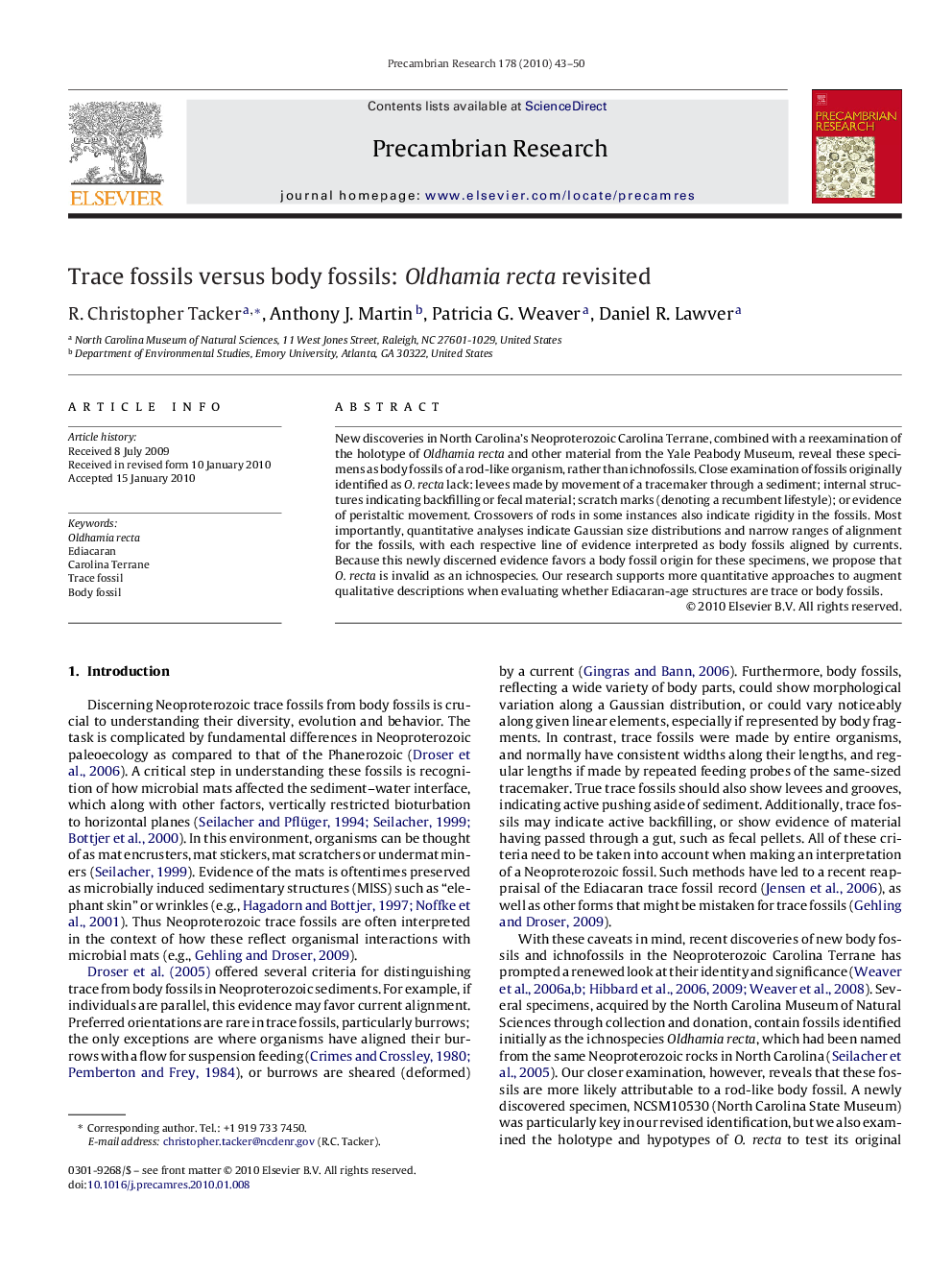| Article ID | Journal | Published Year | Pages | File Type |
|---|---|---|---|---|
| 4723864 | Precambrian Research | 2010 | 8 Pages |
Abstract
New discoveries in North Carolina's Neoproterozoic Carolina Terrane, combined with a reexamination of the holotype of Oldhamia recta and other material from the Yale Peabody Museum, reveal these specimens as body fossils of a rod-like organism, rather than ichnofossils. Close examination of fossils originally identified as O. recta lack: levees made by movement of a tracemaker through a sediment; internal structures indicating backfilling or fecal material; scratch marks (denoting a recumbent lifestyle); or evidence of peristaltic movement. Crossovers of rods in some instances also indicate rigidity in the fossils. Most importantly, quantitative analyses indicate Gaussian size distributions and narrow ranges of alignment for the fossils, with each respective line of evidence interpreted as body fossils aligned by currents. Because this newly discerned evidence favors a body fossil origin for these specimens, we propose that O. recta is invalid as an ichnospecies. Our research supports more quantitative approaches to augment qualitative descriptions when evaluating whether Ediacaran-age structures are trace or body fossils.
Related Topics
Physical Sciences and Engineering
Earth and Planetary Sciences
Geochemistry and Petrology
Authors
R. Christopher Tacker, Anthony J. Martin, Patricia G. Weaver, Daniel R. Lawver,
